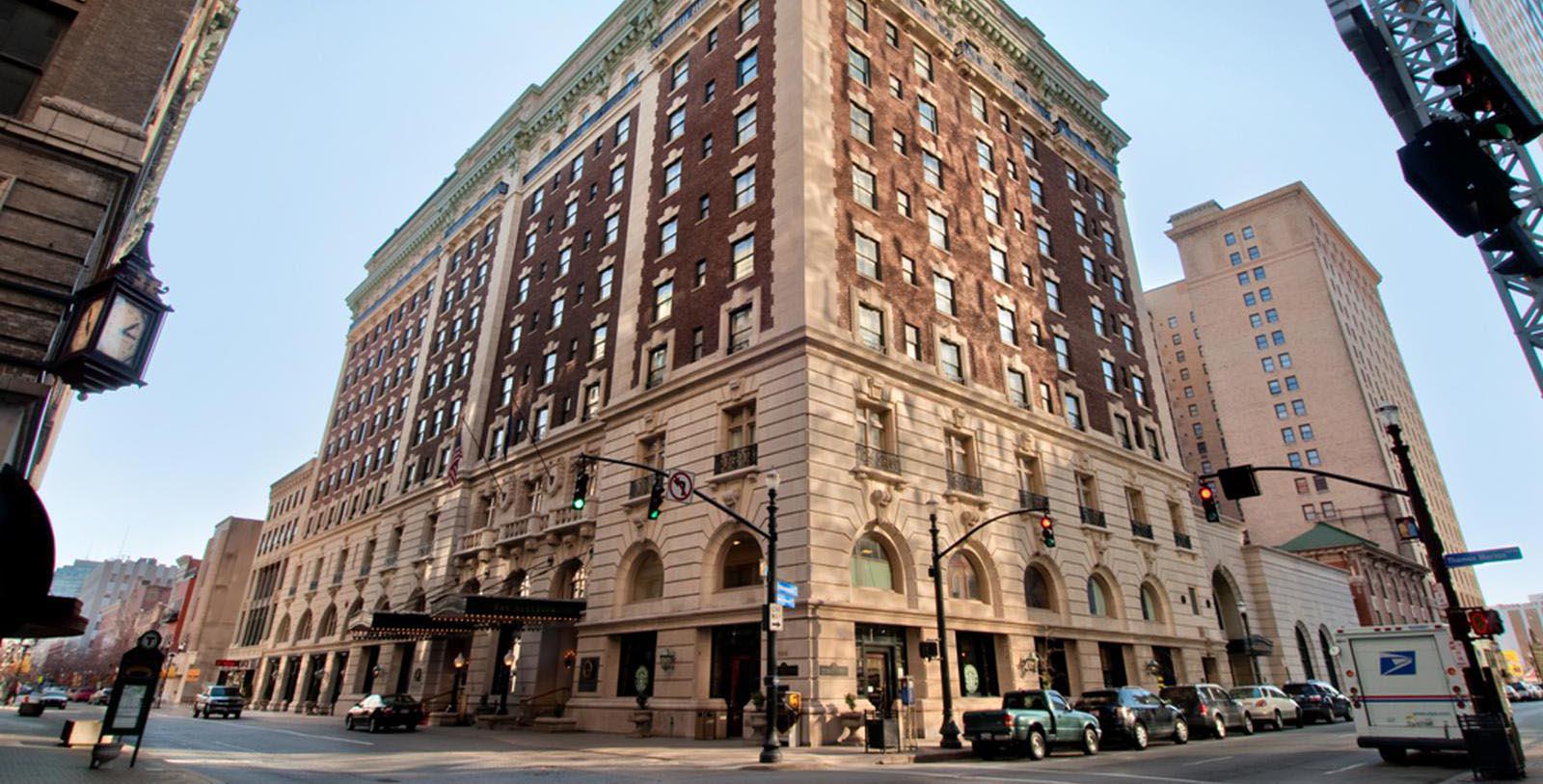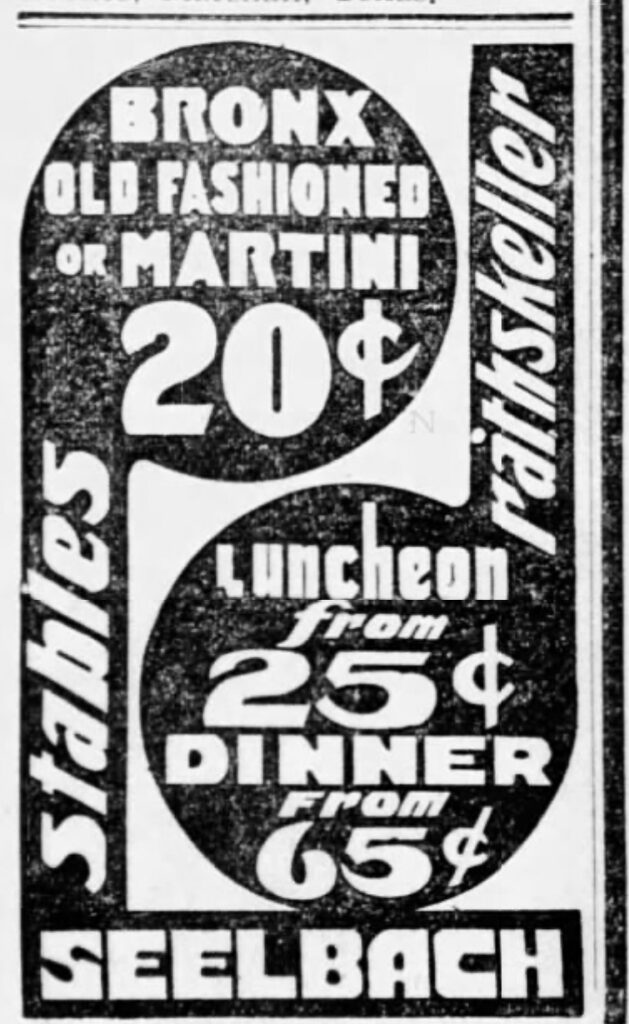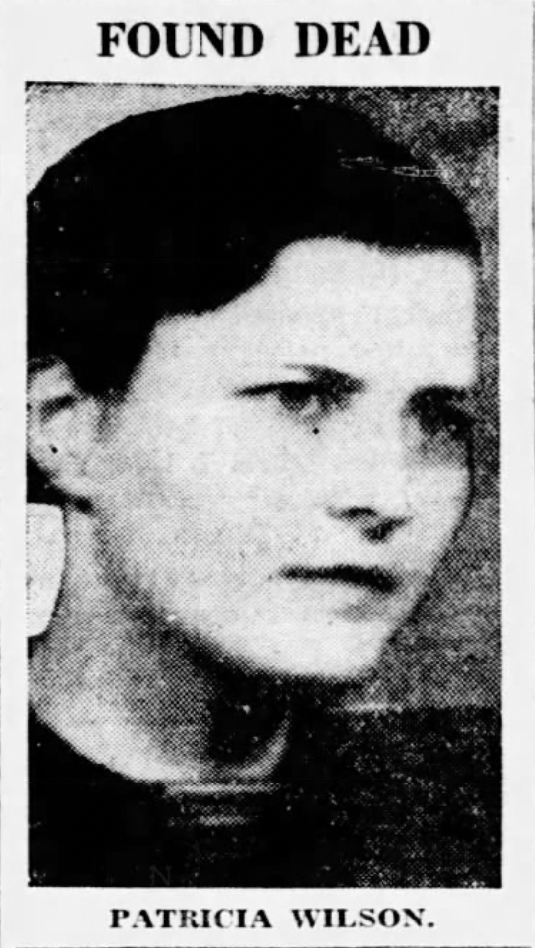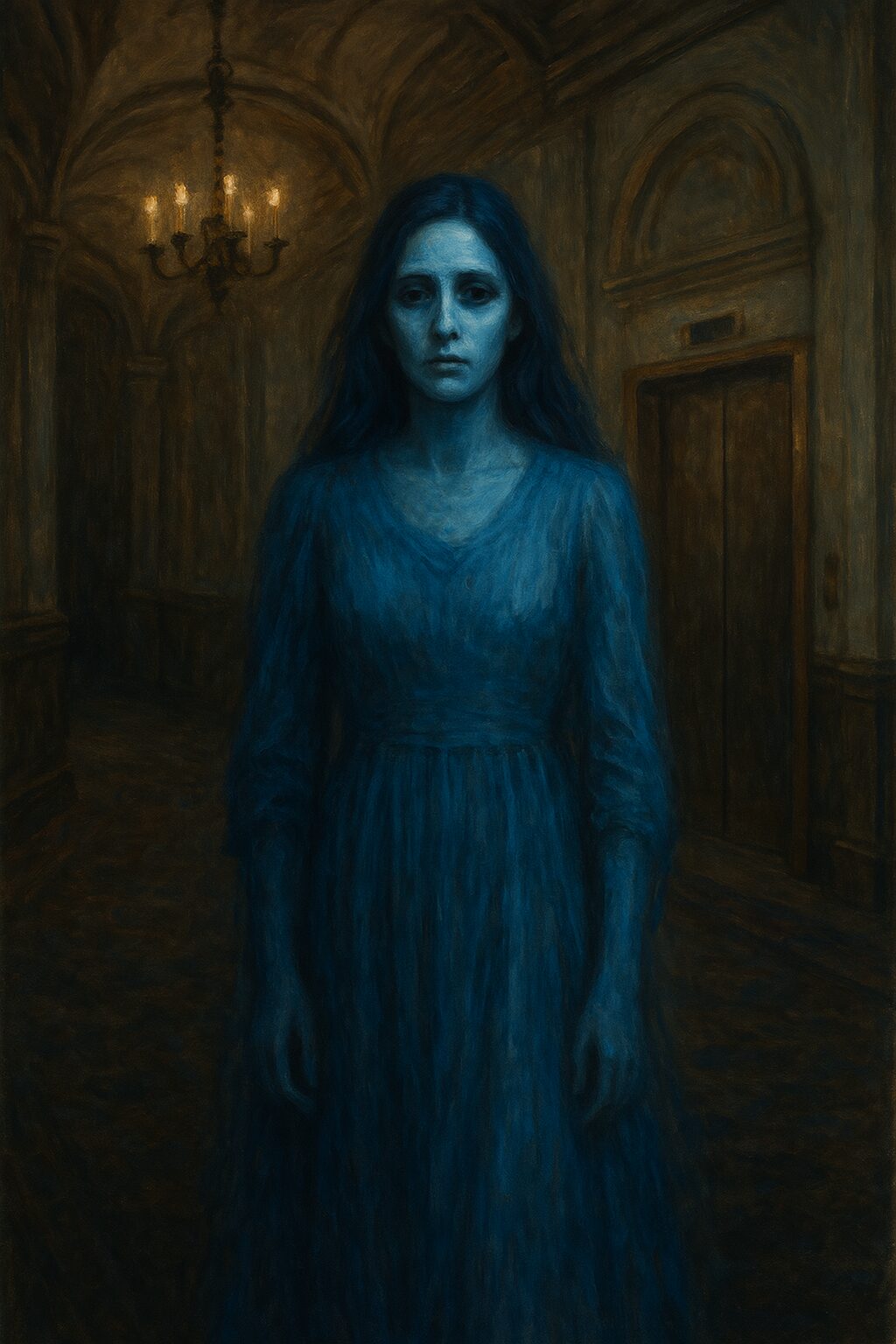The Seelbach Hilton in Louisville, Kentucky, epitomizes Southern luxury and historic charm. This iconic hotel has welcomed infamous figures such as Lucky Luciano, Dutch Schultz, and Al Capone. It served as the inspiration for the wedding scene in The Great Gatsby. Yet, beneath its opulent décor lies a chilling legend: the tale of the “Lady in Blue,” a ghostly figure shrouded in mystery and sorrow. Believed to be the spirit of Pearl Mae Elliott, this tragic figure continues to haunt the halls of this grand hotel, the Seelbach Hilton Lady in Blue. Her life and untimely death are still steeped in questions.


Pearl Mae Elliott: A Mysterious Beginning
Pearl Mae Elliott, later known by her alias Patricia Wilson, was born on March 10, 1910 in Davenport, Oklahoma, to Annie and Albert Elliott. Her father died when Pearl was 5 and her mother died when Pearl was 8. Now orphaned, Pearl and her siblings were separated into different foster homes. Pearl was sent to live with the Funnells. She sought a fresh start and moved to Louisville, Kentucky, in the early 1930s. She settled in at 847 S 1st Street. Her new identity as Patricia Wilson allowed her to leave behind a past that remains largely obscured. The public knew little about her other than her name and her search for a better life in a bustling city.
Corrections and Clarifications – April 2025 Update
Thanks to new information shared by members of Pearl’s family, we now have a clearer picture of her life. I’m grateful for their trust and have updated this piece to reflect what they’ve shared.
First, Pearl’s adoptive surname was Funnell, not Fummell. More importantly, she was never married to Luther Irvin Wilson. Her husband’s name was Charles Wilson, and records show they divorced in Indiana shortly before Pearl moved to Kentucky.
The family also offered an interesting theory about her name change. Around the time Pearl was living in Louisville, a well-known outlaw named Pearl Elliott was making headlines for her connection to John Dillinger. It’s possible our Pearl changed her name to Patricia Wilson, or Patricia Elliott, to avoid being associated with the infamous figure.
Like many stories from the early 20th century, hers has been tangled up in bad records, rumor, and decades of misinformation. I’ll keep working to set it straight, piece by piece.
A Fatal Evening at the Seelbach Hilton
On July 14, 1936, Patricia Wilson left her rooming house around 5:30 p.m. and made her way to the Seelbach Hotel. No one knows why she chose the hotel that night. Many speculated she was meeting someone. Early the following morning, her lifeless body was discovered by hotel staff on top of a freight elevator. Coroner John M. Keaney confirmed she had been dead for several hours, with both her legs and skull fractured in the fall.
The circumstances of her death puzzled investigators. The narrow, 4-foot-wide elevator shaft was accessible only from linen closets used by hotel staff. It seemed improbable that she would have wandered in by accident. Hotel manager Home C. Maxwell suggested she mistook the elevator door for a restroom, but this theory raised more questions than it answered. The linen closets were only accessible to staff, so….how did she end up inside?
An Unsolved Mystery
The investigation took an unexpected turn on July 16, when police discovered Patricia’s hat in “The Stables,” a restaurant within the hotel. Witnesses remembered her wearing it when she left her rooming house. This sparked speculation that she may have been with a companion. Despite efforts to identify this person, the mystery remained unsolved.


As days passed, so did the inquiries. On August 8, 1936, the coroner’s jury deemed her death accidental, attributing it to her own “carelessness.” Yet, questions lingered, and whispers about the strange death at the Seelbach persisted.
General Henry Denhardt: Rumors, Trials, and a Shocking End
The only person to ever be publicly named as being involved in Patricia’s death was an unsavory character named Brig. Gen. Henry H Denhardt. On July 3rd, 1937 the Kentucky Advocate printed an article with the headline:


Denhardt dismissed the lawsuit as ‘absurd, laughable, and ridiculous,’ insisting he had never heard of Patricia. He claimed he wasn’t in Louisville at the time and was never at the Seelbach. Yet, Edward C. Langan, administrator of Patricia’s estate, pressed forward with the claim. The suit charged that “General Denhardt assaulted, beat, and bruised Patricia and caused her to fall down an elevator shaft in the hotel.”
A Web of Rumors
Interestingly enough, Denhardt had recently been tried in Henry County on a charge of murder in the fatal shooting of his fiance, Verna Garr Taylor. The trial ended in a hung jury and Denhardt was set to be retried in the fall. Attorney James Robertson who prepared the petition said that shortly after Verna’s death a client came to him with crucial information. The client said that Denhardt was responsible for the death of a girl whose body was found in the elevator shaft at the Seelbach Hotel.1 He said he didn’t put much thought into it until a friend of his told him the exact same thing shortly after. Robertson initially thought that people were just trying to pin things on a man who was charged with one crime. However, within the last few weeks, the rumor became so strong he started thoroughly investigating the situation.
Henry Denhardt also just happened to be the former adjutant general and lieutenant governor of Kentucky. He was a man with many connections and probably a decent amount of money. However, just two months later General Denhardt was shot to death in front of the Hotel Armstrong. This occurred at 10:15 pm on Monday September 20th, 1937. It just so happened that Denhardt was set to go on trial again for the murder of Verna Garr Taylor the following morning. Denhardt had been shot and killed by Verna’s brothers.
The Seelbach’s Lady in Blue
In the years following Patricia’s tragic death, stories of strange sightings started making their way among staff. One of the most well documented happened in 1987 to James Scott who was cooking waffles and omelets outside the Oak Room. He happened to glance towards the elevators on the north end of the hotel and saw a young woman with long dark hair in a long blue dress. She walked through the closed doors of the elevator. A housekeeper named Sharon White described the same person on the 8th floor getting off the same elevator.
Around 1994, a man who worked in the Oakroom restaurant inside the hotel said he had an encounter with the Lady in Blue. He was in the Oakroom alone setting up for Sunday’s brunch when he heard a woman’s voice from behind him. She said “I like what you are doing with the place.” He turned around and saw a woman in blue floating across the room and out the window.
In 2018, a headstone was placed at her grave in Louisville’s Evergreen Cemetery. It bore her legal name, “Pearl M. Elliott,” along with her alias, “Patricia Wilson,” and her title as the “Lady in Blue.” While the grave marker has brought a sense of closure for some, others believe it only deepens the mystery surrounding her life and death.
A Haunting Legacy
The Seelbach Hilton’s Lady in Blue’s story endures within the hotel, merging history and legend in one of Louisville’s most famous haunts. Her spectral presence has become a part of the hotel’s allure. It draws those curious about the tragic figure who roams its hallways. Does the Lady in Blue remain out of sorrow, unfinished business, or something even more mysterious? Whatever the reason, her presence lingers, a restless figure forever woven into the Seelbach’s dark, glittering history.
The Seelbach Hilton’s Lady in Blue isn’t alone—another ghostly woman in blue lingers at the historic Buxton Inn, her presence felt by guests for generations. Are these spectral ladies part of a larger paranormal pattern? Uncover the chilling history of the Buxton Inn’s resident spirit here.
Sources:
- Kentucky Advocate | Sat, Jul 03, 1973 | Page 4 ↩︎






First, thank you for being one of the first writers to put a true and accurate version of Pearl Elliott’s story out there in the media. You deserve a lot of credit for your integrity. We are beyond exhausted trying to battle the Seelbach’s version of Pearl’s life and tragic death and it is very saddening.
Everything in your Lady in Blue article is accurate except for two things: (1) her adoptive family’s name is Funnell, not Fummell. and (2) she was never married to Luther Irvin Wilson. If you research Luther Irvin Wilson’s marriage record, you will see that he married a woman named “Patricia Shackleford” in Jeffersonville, Indiana. Patricia Shackleford is about the same age as Pearl Elliott and she divorced her husband about the same time as Pearl would have divorced her husband – CHARLES Wilson. Our Pearl/Patricia divorced her husband in Marion County, Indianapolis, Indiana. When Patricia Shackleford Wilson divorced her Mr. Wilson in Jefferson County, Kentucky, research shows that she lived for many, many, many, more years; long after our Pearl/Patricia’s death in 1936.
As an aside, we have a theorty that our Pearl Elliott changed her name to “Patricia Elliott” because at that time in history, there was an infamous outlaw woman named “Pearl Elliott” who was keeping company with John Dillinger. The association with the name might have gotten under her skin. We don’t know for sure but that’s a possibility.
It would be appreciated it you would revise your article to make the corrections outlined above.
Thank you for telling her story. You are going to be a good journalist.
The Loffland Family
Thank you so much for this information! I would love to update the post with the most accurate info as possible. I have sent your family an email. I appreciate your kind words.